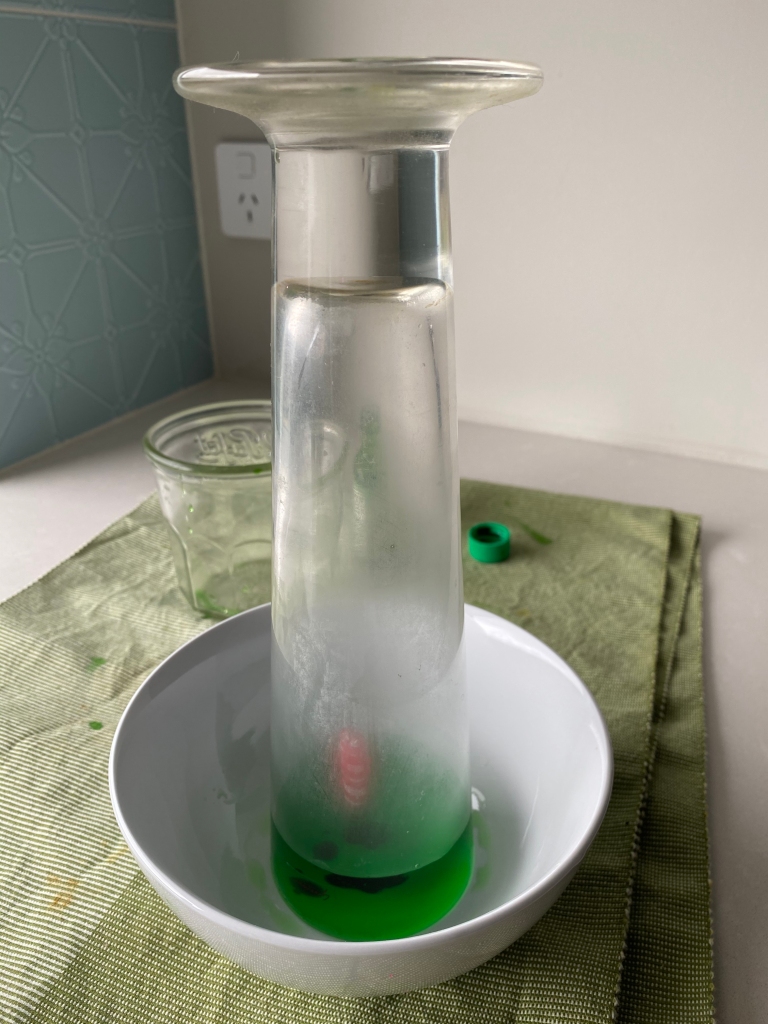This is a very dramatic experiment that shows how differences in air pressure can create a vacuum. It’s super fun to watch, and very easy to try at home.
Dr Lahiru Gangoda is a cancer researcher and a member of Team WEHI. Her research is on finding better ways to treat skin cancer. Don’t forget wear your sun screen! You can read more about Lahiru here.
Malinthi is in grade 6. She loves science and looking after the environment. She is the Science captain and the Green-house vice-captain at her school. Malinthi is also part of the space-wattle team at her school. Her school will be receiving some Golden Wattle seeds (Australia’s national floral emblem) that has been on board the International Space station for the last 6 months. The space-wattle team will plant and looks after these seeds that has spent time in space.
*Science is great fun! But please, always check with an adult before you start your experiment!*
You will need:
- A white bowl
- A birthday candle
- Water
- Food colouring
- A tall, clear glass or vase (with a top narrow enough to rest on the bottom of the bowl)
Step 1:
Light the candle and drip a little wax into the centre of the bowl. Stand the candle upright in the bowl, using the wax to hold it in place.
Step 2:
Add a few drops of food colouring to the water, and mix it together.
Step 3:
Pour the coloured water around the candle in the bowl (make sure you don’t pour it over the candle! You don’t want to put out the flame!)
Step 4:
Carefully turn the tall glass upside-down over the candle, and watch it drink!

Malinthi will now demonstrate this experiment for you!
What can we learn?
The candle flame heats up the air in the glass. Warm air takes up more space than cool air, and this causes the air pressure inside the glass to increase. This makes some of the air to escape from the bottom of the glass. You can see a few bubbles forming in the water as some air escapes.
The candle needs oxygen to burn, but it quickly uses all the oxygen inside the glass. When the oxygen runs out, the candle stops burning, and the air inside the glass cools down again. Since some air escaped the glass when the candle was burning there is some empty space inside the glass now (a vacuum). The air pressure inside the glass is lower than the air outside the glass. The air outside the glass immediately tries to rush in to the glass, where the pressure is lower and fill up the vacuum. This pushes water into the glass.
Fun fact: At the Institute where we work, the air pressure in the labs is kept just a little bit lower than the air pressure outside in the office areas. This is so that if anything spills and there are fumes, they stay in the lab area rather than ending up all over the building!
